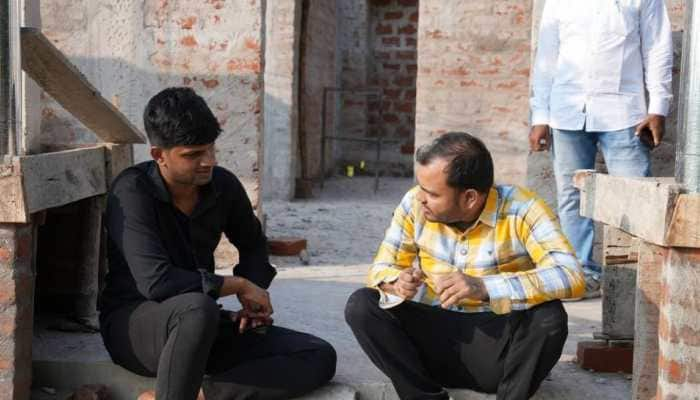I was in Bhopal that deadly night…
Twenty five years have gone by since the disaster struck my birthplace, Bhopal in Madhya Pradesh. I was just a child then, but the fateful night still haunts me and my family. Dangerous toxic gases from the Union Carbide factory had leaked. Our home was in close vicinity of the plant. My mom and dad had feared for my life and theirs too.
Trending Photos
)
Twenty five years have gone by since the disaster struck my birthplace, Bhopal in Madhya Pradesh. I was just a child then, but the fateful night still haunts me and my family. Dangerous toxic gases from the Union Carbide factory had leaked. Our home was in close vicinity of the plant. My mom and dad had feared for my life and theirs too. <br><br>On the night of December 2nd the city woke up to the cries of men, women, and children. The sky was filled with hoarse cries of pain and death. Deleterious gas permeated the air of the city. The night went on to become one of the most horrifying episodes in the annals of India. It went on to be called the ‘Hiroshima of the Chemical Industry’ and the worst commercial disaster of the world.
<br><br>
Probably it was God’s will that we survived. Dad tells me that it was a very narrow escape for us, as the breeze was in the opposite direction from our house and towards the factory. So the air blew away the toxic gases to a large extent than towards us. If this is not providence, what is?
<br><br>
When we chat again about the dark venomous night, my mother recounts how they had suddenly awakened to a strange choking feeling. How in the middle of the night it was becoming difficult to breathe. How a sniff felt noxious and the mind was abuzz with ideas about what may have transpired.
<br><br>
The first reaction was to hurriedly check the kitchen, whether there was a gas leak. But sensing that the foul smell was coming from outside, they had immediately shut every door and window of the house to prevent further poisoning of the air inside the house.
<br><br>
Everyone stayed indoors, firmly shut-in. I was bundled under layers of blanket. Venturing out would have meant suffocation and inevitable death. Alarmed, wide awake and trapped, we sat through the night and the following day as well. It was impossible to step out.
<br><br>
As the news spread, the phone rang incessantly. My father’s worst fears were confirmed. We were caught in a middle of a terrible gas leak from the plant nearby.
<br><br>
The tension of those hours, as they stretched on forever, and our prolonged agony are impossible to describe. We could not take any transport to evacuate. It was even more lethal outside.
<br><br>
Everyone kept guessing about the measures that the company Union Carbide and authorities were taking to put an end to the terrible accident. We kept getting updates over phone, but stranded we remained.
<br><br>
We were feeling nauseated and sick. Nobody felt like eating or drinking anything. There was no medical aid at hand. How were the doctors expected to wade through deadly mist to reach all of us? It was impossible. Prayers were all we had.
<br><br>
Finally, after two days when my parents stepped out, they were horrified with what they saw. Our neighbourhood, the streets, the slums were all strewn with death. People had succumbed struggling against the gasp of murderous fumes that slowly but surely crept into their systems and put them to sleep forever. Like a shadowy monster it had grabbed them by the collar, pumped their chest and choked them with its vile grip.
<br><br>
The plight of those who survived was unimaginable. They were worse than the dead. Terribly ill and shocked by the all pervading dreadfulness, they were leaving the city in droves. The city began to wear a deserted look. No one was willing to live there anymore. The dilemma of those who had their loved ones left to bury or cremate was unthinkable. The tug of love for relations now dead versus a flight for life – is a choice no one should have to ever make.
<br><br>
When my family reached the hospital for medical treatment, our blood froze with the despicable scene. Hospitals were packed with patients writhing in pain and waiting to die, since doctors were absolutely clueless about how to treat them. As I think back, I recall with dread the making of this ghastly tragedy.
<br><br>
The Union Carbide India Limited in Bhopal was established in 1969. This factory used to produce a type of pesticide called ‘carbaryl’. In the year 1979, a methyl Isocyanate plant was also added to the site. Methyl Isocyanate or MIC is an extremely reactive chemical and use of this requires high levels of security for the plant. On the night of December 2nd, when this devastating incident occurred, a huge quantity of water entered tank No. 610 containing almost 42 tonnes of Methyl Isocyanate.
<br><br>
As a result the temperature inside the tank increased, putting pressure to a level which it was not designed to withstand. This led to the release of a vast volume of toxic gases. These poisonous fumes sped through the city of Bhopal causing havoc.
<br><br>
Every breath of the toxic air brought with it a distinct burning sensation in the lungs. People woke up from their slumber only to be trapped in the clutches of death. Perhaps death was soothing alternative, relieving people from the stab of pain. Not only did thousands die because of the suspended toxins, many more died while fleeing and in stampedes.
<br><br>
There have been a lot of theories as to the reason for the leak of these noxious gases. Some claim that bad maintenance led to the water getting into the tanks. Other sources say that it was the owners’ intention to reduce expenses and for that they turned a blind eye to the safety measures. Another major factor that added to the huge number of casualties was the proximity of the plant to such a densely populated area.
<br><br>
Of the 8 lakh people residing in Bhopal at that time, almost 2000 died immediately as a result of the toxic gases in the atmosphere. As many as 3 lakh people were injured. It is said that the city medical officials had no inkling to the dangers of the chemicals produced at the Union Carbide factory. So when the mishap occurred, hospitals were not prepared to tackle this kind of emergency.
<br><br>
25 years on people are still suffering from a plethora of ailments like partial blindness, defective immune systems, severe depression and menstrual disorders in women. The fingers of the calamity have left imprint on the next generation as well - women have given birth to offsprings with genetic defects.
<br><br>
Indian Government filed a lawsuit against Union Carbide for an estimated US $3 billion. But Union Carbide clearly denied any kind of liability. According to media reports, the company said that it had adhered to every kind of safety norm and the leak was due to sabotage. Instead, it countersued the Government of India and the state of Madhya Pradesh. These court games continued for years while the victims continued to suffer.
<br><br>
Ultimately in the year 1989, Union Carbide finally succumbed and the Supreme Court ordered it to pay a sum of US$470 million for the 1,02,000 affected people, which included 3,000 dead. But the number of victims had increased by at least five times in this period, taking the toll to 15,000 dead and 5 lakh affected. Thus, the amount turned out to be inadequate for such a huge number of people.
<br><br>
A disaster of this scale shook every part of the world, left not only the human dead, but destroyed the flora and fauna of the entire region. As of today, the battle for adequate compensation is still being waged and hospitals are still full.
<br><br>
As we turn leaflets depicting ache and tears about the aftermath, we also hear that Union Carbide would be throwing open its gates again, soon….
Stay informed on all the latest news, real-time breaking news updates, and follow all the important headlines in india news and world News on Zee News.
Advertisement
Live Tv
Advertisement







)
)
)
)
)
)
)
)
)
)
